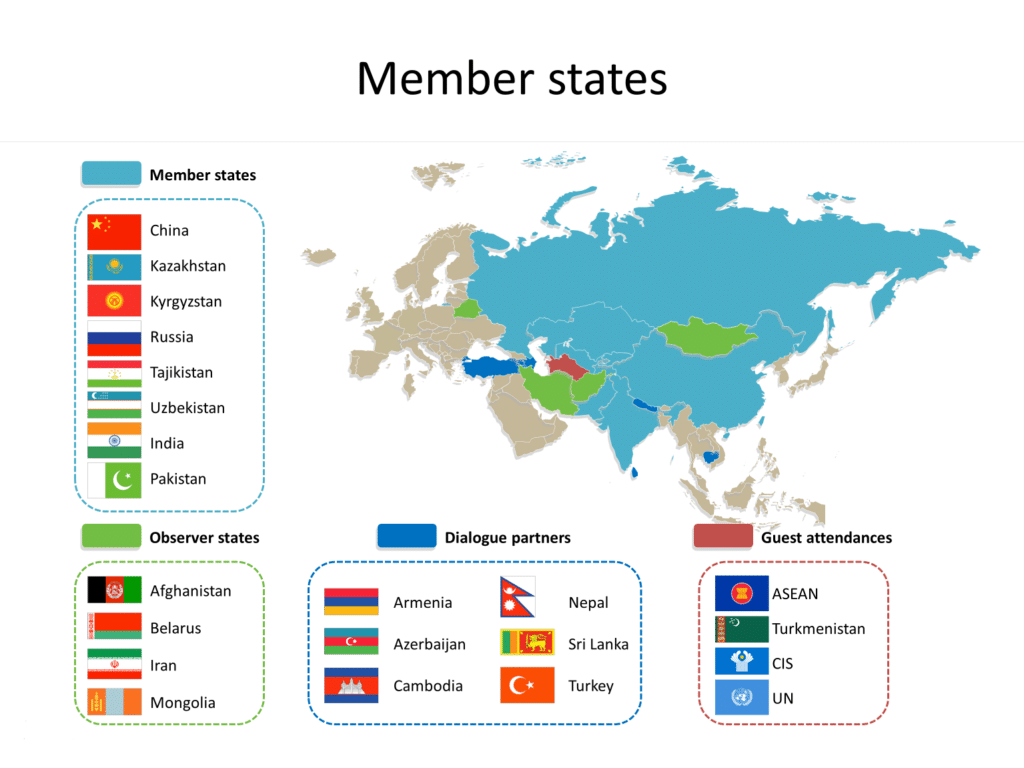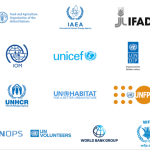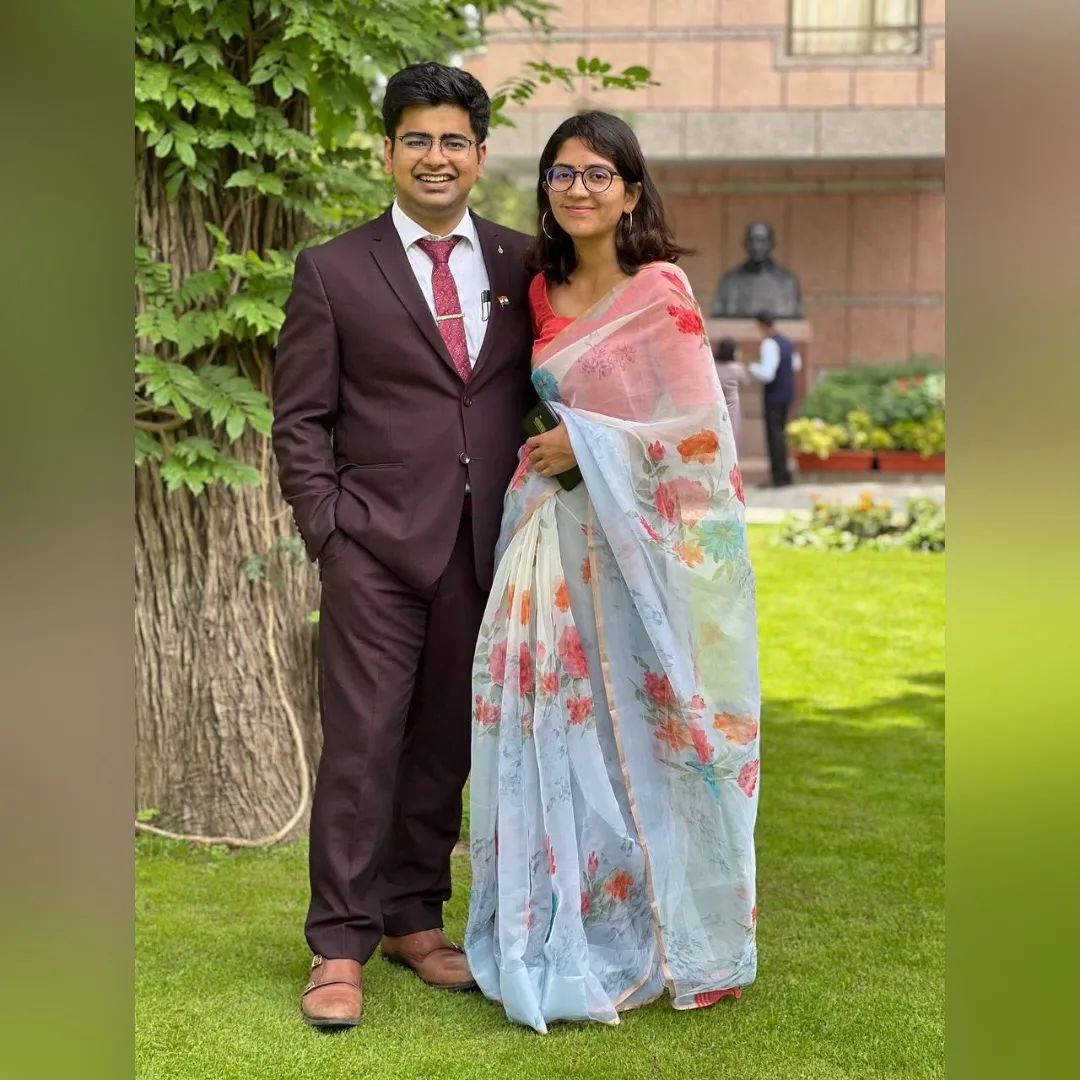
The SCO is a permanent international organisation made up of governments. It is a political, economic, and military group in Eurasia that works to keep peace, security, and safety in the area.It was made in the year 2001.
• The SCO Charter was signed in 2002, and it went into effect the following year, in 2003.
It has two permanent bodies: the SCO Secretariat in Beijing and the Executive Committee of the Regional Anti-Terrorist Structure (RATS) in Tashkent. The SCO covers 40% of the world’s people, nearly 20% of the world’s GDP, and 22% of the world’s landmass.
SCO stands for Shanghai Cooperation Organisation.
• Kazakhstan, China, Kyrgyzstan, Russia, and Tajikistan were all part of the Shanghai Five before the SCO was made in 2001.
• The Shanghai Five (1996) came about after a series of talks between the four former Soviet states and China about dividing up their borders and getting rid of their military forces. These talks were meant to keep the borders stable.
• On June 15, 2001, the leaders of these countries and Uzbekistan met in Shanghai to announce a new organisation that would improve political and economic cooperation. The SCO Charter was signed on July 7, 2002, and it went into effect on September 19, 2003.
Since then, it has grown to include eight states. On June 9, 2017, India and Pakistan joined. Observers or partners from a number of countries are taking part.
• India and Pakistan became members in 2017.
SCO’s goals are:
• promoting successful cooperation in politics, trade and economy, research and technology, and culture. • strengthening ties in education, energy, transportation, tourism, environmental protection, and other areas.
• Keep peace, security, and safety in the area and make sure they stay that way.
• The creation of a new political and economic order that is open, fair, and logical.
Membership: • Kazakhstan, China, Kyrgyzstan, Russia, Tajikistan, Uzbekistan, India, and Pakistan.
Structure: • The Heads of State Council is the SCO’s highest body. It decides how the SCO works on the inside, how it interacts with other countries and international groups, and how it handles international problems.
• The Heads of Government Council approves the budget and talks about and makes decisions about issues connected to the SCO’s economic interactions.
• The Council of Ministers of Foreign Affairs talks about things that happen every day.
• Regional Anti-Terrorist Structure (RATS): This was set up to fight terrorism, secession, and extremism.
• SCO Secretariat: This group is based in Beijing and helps with information, analysis, and organisation.
• Official language: Russian and Chinese are the official working languages of the SCO Secretariat.
How important SCO is for India
The area of Central Asia has a lot of important rocks and natural resources. India is also very interested in working together on security, trade, geopolitics, and energy.India’s position in the SCO has also helped it become a major pan-Asian player. Until recently, India was only a major player in the South Asian Region.
• It’s important for India’s “multi-alignments” strategy.
• From India’s point of view, the Shanghai Cooperation Organisation (SCO) is very important because its security, military, economic, and geopolitical interests are closely tied to what happens in this area.
• Terrorism, radicalism, and instability are big problems that pose a serious threat to India’s freedom and independence.
• India also wants Afghanistan to be safe, and RATS gives India access to counter-terrorism information that doesn’t focus on Pakistan.Because most of Central Asia is landlocked, it is hard to get to these riches. In this way, building the International North-South Transport has been a top priority for India. India will be able to connect Central Asia to South Asia if it joins the SCO. Central Asia is part of India’s larger neighbourhood. India’s relationships with countries in the region have a lot of room for improvement in areas like economy, security, policy, investment, trade, connectivity, energy, and capacity development.
• Since India joined the SCO, its leaders, like the prime minister, have been able to meet regularly and frequently with their counterparts from Central Asia, Russia, China, Afghanistan, and other places.
• India’s Prime Minister’s historic trip to the five Central Asian Republics in July 2015 showed that the country wants to improve ties with Central Asia in many ways. A number of deals were made, and new projects were started.
• The TAPI gas pipeline is an example of a project that is good for both countries. • In the future, Central Asian countries can learn a lot from India’s growth experience, especially when it comes to promoting agriculture, small and medium businesses, pharmaceuticals, and information technology.
Threats to the SCO
The SCO system is a big guarantee for the future of multilateral cooperation in the region. But there are problems ahead, which are:
• The game between the big powers in the area is getting worse. It includes fighting against terrorism, extremism, and separatism, as well as trafficking in drugs and weapons, illegal immigrants, and other things.
• Lack of a strong sense of togetherness among its member states
• The change in the way people work together after growth. Even though the members of the SCO are close physically, they have very different histories, backgrounds, languages, national interests, forms of government, wealth, and cultures. This makes it hard for the SCO to make decisions.
















